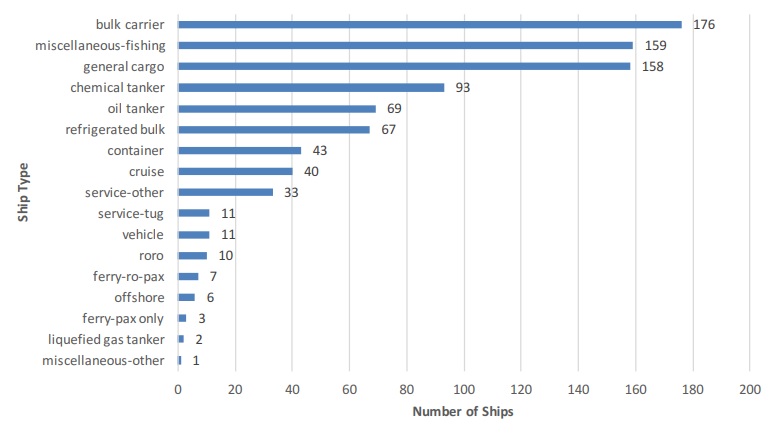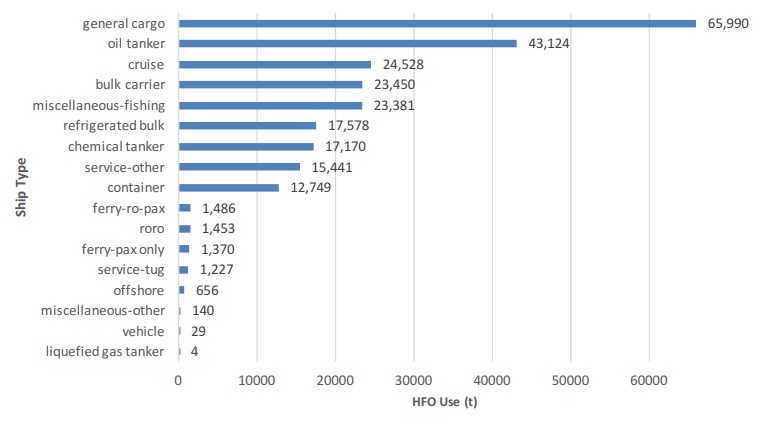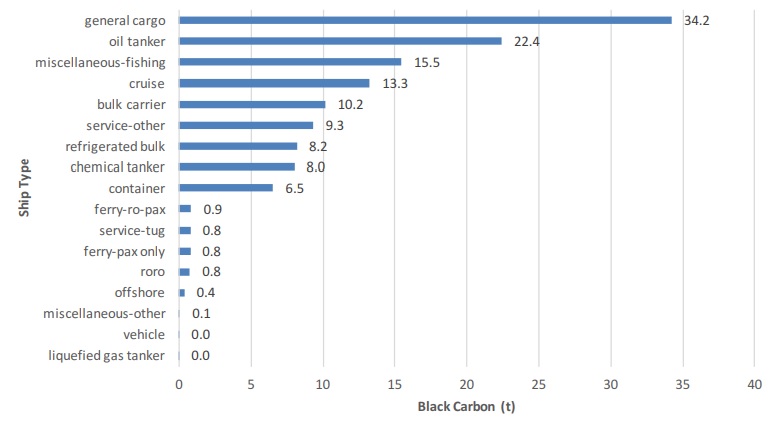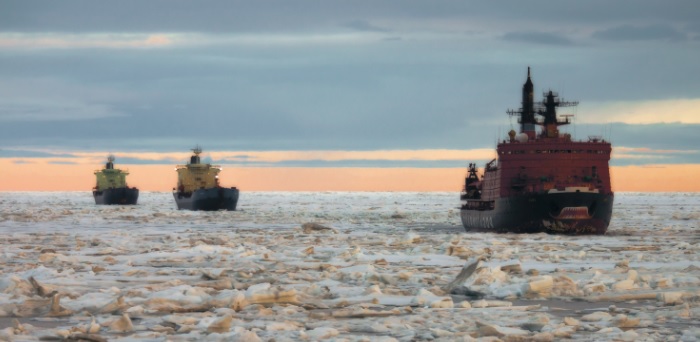The International Council on Clean Transportation (ICCT), issued five briefing papers, prepared by PhD Bryan Comer, summarizing HFO use in the IMO Polar Code Arctic, for 2015. Analyzing data per ship type, the paper noted there were 17 ship types operating in the area in 2015, with bulk carriers, fishing vessels, and general cargo vessels accounting for the greatest number of HFO-fueled ships.
The use of heavy fuel oil as a marine fuel poses serious environmental and economic risks in ecologically sensitive areas like the Arctic, not only because of potential fuel oil spills, but also because burning it produces harmful air pollutants, including black carbon (BC). As ship traffic increases in the Arctic, the risk to the Arctic environment and its peoples will also increase.

Key points
In 2015, in IMO Arctic:
- 2,086 ships operated for 2.6 million hours, traveling 10.3 million nautical miles, with 1.1 million tonnes of fuel onboard, collectively.
- These ships consumed 436 thousand tonnes of fuel and emitted 193 tonnes of BC.
- HFO represented 57% of fuel use by weight, 76% of fuel carried by weight, and 56% of distance-weighted fuel carried.
- In total, 68% of the 193 tonnes of BC these ships emitted resulted from burning HFO.

Highlights
- HFO-fueled general cargo, oil tanker, and cruise ships together consumed nearly 134 thousand tonnes of HFO and emitted 70 tonnes of BC, representing 55% of HFO use and 36% of BC emissions from ships in IMO Arctic in 2015
- 889 of 2,086, or 42%, of ships operated on HFO
- HFO represented 57% of fuel use, 76% of fuel carried, and 56% of distance-weighted fuel carried
- HFO-fueled ships emitted 131 tonnes of BC, or 68% of BC emitted from all ships
- General cargo ships used the most HFO (66,000 t) and emitted the most BC (34 t), accounting for 26% of HFO use and 18% of BC emissions from HFO-fueled ships, followed by oil tankers and cruise ships
- Bulk carriers carried the most HFO onboard as fuel, carrying nearly 248 thousand tonnes of HFO, equal to 30% of the HFO as fuel onboard ships
- In terms of distance-weighted HFO carriage, general cargo ships again rose to the top; however, fishing vessels ranked 3rd despite usually having smaller fuel tanks than most cargo ships, reflecting the fact that, as a group, fishing vessels sailed the greatest distance in the IMO Arctic in 2015, more than 1.2 million nautical miles

From an HFO spill risk perspective, it seems that, at the moment, the greatest threat arises from general cargo ships, oil tankers, fishing vessels, container ships, and bulk carriers, as these ships carry a lot of HFO onboard as fuel, sail long distances through the Arctic while carrying HFO onboard, or both. From a BC perspective, the greatest threats from HFO-fueled ships appear to come from general cargo ships, oil tankers, fishing vessels, cruise ships, and bulk carriers; each emitted more than 10 tonnes of BC in the IMO Arctic in 2015. Explore more herebelow:

































































